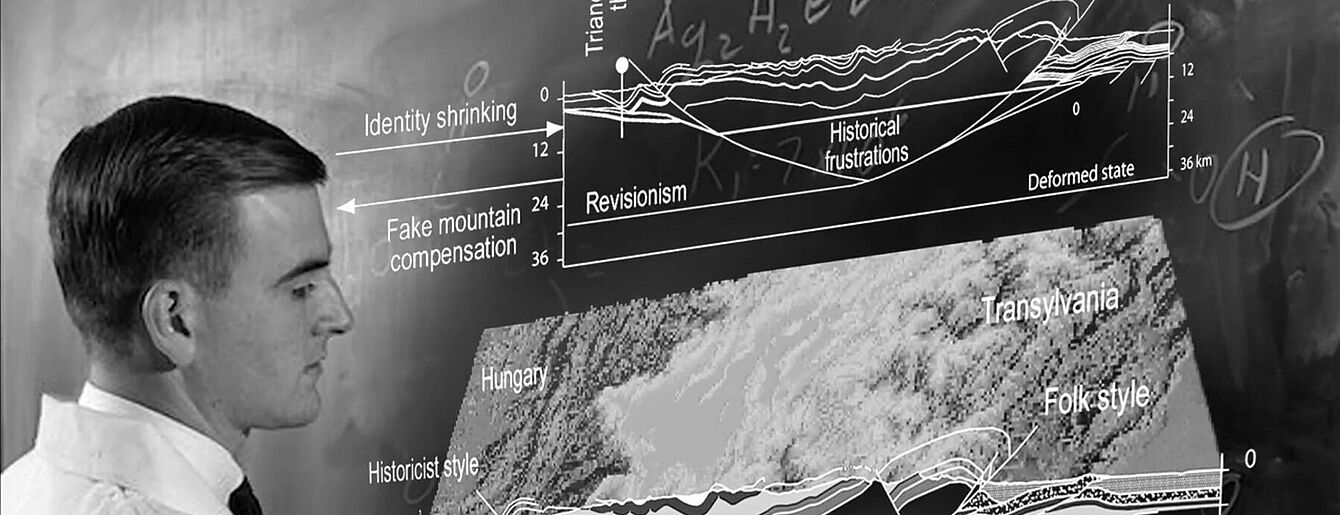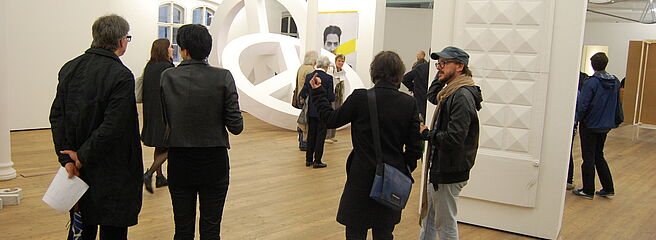
June 4 – August 28,
2020 (extendet)
Online
Leaning on the Past, Working for the Future
Artists and collectives: János Brückner, Igor & Ivan Buharov mit Vasile Croat, Sylvia Eckermann & Gerald Nestler, Mark Fridvalszki, Szabolcs KissPál, Land 3C (Tomas Narkevicius, Gorazd Popov, Vitalij Puzyriov and Vaida Stepanovaite), Márió Z. Nemes, Dominika Trapp, Suzanne Treister
Curators: Krisztina Hunya, Zsolt Miklósvölgyi
Assistant curator: Daniel Hüttler
Project coordinator: Nora Malles
Following a brief optimistic era of political transition that soon shifted to disenchantment, Central and Eastern European states are today haunted by a spectre long thought to have disappeared. Contemporary far-right populist agendas, which are flooding not only the political topography of the region but also democratic systems all over the world, establish their xenophobic narratives primarily on the basis of an ill-founded and fraudulent ethnographic authenticity. In doing so, these nationalist movements have occupied and co-opted national symbols, historical myths, and geocultural narratives for their own purposes as well.
Due to the given circumstances, it is unfortunately not possible to present works in the physical space of Kunsthalle Exnergasse. However, we deem it important to introduce the public to Hungarian and international artistic positions, which challenge the political monopoly of cultural narratives and reframe them to make way for progressive forms of thinking, origin, and belonging. For the duration of the exhibition, short films, essays, poems, image series, web-based projects, and an Instagram intervention will be made available to our audience in diverse online formats. This experimental setup aims to transcend the political and aesthetic strategies of contemporary nationalist ideologies, be it through the creative reinterpretation of folkloric traditions into contemporary (post)digital discourses, the deconstruction of patriarchal gender norms, or by returning to utopian visions on a planetary and cosmic scale.
The opening of the exhibition was planned for June 4, 2020 to coincide with the 100th anniversary of the Treaty of Trianon, the peace agreement between the Allies of World War I and Hungary. The online programme starts with an essay by the curators as well as four artists’ films exploring the imaginary in Hungarian reality.
In the project planning phase, the ideological machinery of the Hungarian government was indulging in this year of pain and grief. Right-wing governments tend to take the commemoration of the historical event upon which state borders were radically redrawn as an occasion to proclaim xenophobic and nationalist ideologies. The meaning this date takes on in times of a generally practiced distancing and the kind of identity politics promoted along with it are open to an urgent debate.
Click here for Terraforming of Post-Hungarianness, an Essay by Zsolt Miklósvölgyi and Márió Z. Nemes.
Click here to see the video presentations by János Brückner, Igor & Ivan Buharov with Vasile Croat, Szabolcs KissPál, and Dominika Trapp
Instagram intervention by Márk Fridvalszki
From June 4 to July 14, 2020
Márk Fridvalszki takes over Kunsthalle Exnergasse’s Instagram account from June 4 to July 16, 2020. Three times a week, he posts image collages he specially conceived for the project Leaning on the Past, Working for the Future. The digital collages are based on key figures, stories, places and art works of Hungarian modernism.
The works of Márk Fridvalszki (*1981 in Budapest, lives in Berlin) primarily focus on the sensual materiality of failed modernist visions. His artistic programme can be described as archaeo-futurological as his collages, paintings, and prints reflect cultural sediments of our lost collective futurities. This reverse archaeology also engenders a spectropoetic approach, which explores haunting utopist fantasies of various future pasts. Hence, visual art and hauntology are becoming mutual metonyms for one another on multiple scales: from psychedelic landscapes to the cosmic proportions of planetary perspectives.
Mark Fridvalszki: Print and Paint!
For those who seek further engagement with his art, he prepared a Print and Paint! graphic to be downloaded on his website. --› Download the PDF, print on A4, paint and fulfil the mission of ‘popular modernism’.
Click hereto see Márió Z. Nemes's Turanium, image with poetry, 2018 - 2020
From June 18, 2020
Suzanne Treister: The Escapist BHST (Black Hole Spacetime), 2019
From June 18, 2020
Suzanne Treister (*1958 lives in London) began in the early 1990s to critically assess the changing social relationships brought forward by the interception of digital technologies, alternative belief systems and intergalactic visions of the future. Her comic seriesEscapist BHST—available as PDF on the KEX website—follows a non specific interplanetary entity whose depicted experiences are a poetic imagining of spaces of understanding within and beyond those of contemporary science.
LAND 3C
A video-game-like digital environment created and screened as a LAND 3C museum
From July 2, 2020
LAND 3C (est. in 2019, by Tomas Narkevicius, Gorazd Popov, Vitalij Puzyriov and Vaida Stepanovaite, Symon Levitner, who live in Vilnius, Sofia, and Bratislava) is a fictional entity constituted by the hypothetical union of the landmass between the Baltic, Black, and the Adriatic seas. In this fictional scenario, the world has undergone a process of hyper-homogenization where LAND 3C emerged as a strategy to preserve that which was believed to represent the cultural singularity of the region it constitutes. By putting this entity together, LAND 3C transgresses all proto-Slavic, Visegrádian, or any other geopolitical narrative deployed by the contemporary divisions in order to transcend the essence of the territorial-nation-states. By this exercise of Hypothesizing a (possible) future LAND 3C problematizes and questions the intense changes that Eastern Europe is undergoing in the global, cultural, and national sense.
The Spectrality of Future in Finance
Gerald Nestler in conversation with Daniel Hüttler and Zsolt Miklósvölgyi, video podcast
From July 16, 2020
In conversation with Daniel Hüttler and Zsolt Miklósvölgyi, Gerald Nestler elaborates on postdisciplinary research and questions of what it means to speculate on the odds of risk and financial models for dealing with uncertainty.
Gerald (who lives and works in Vienna) combines an array of media to display, his mainly research based, collaborative and curatorial engagements, which in many cases manifest in dialogues and projects with the artist Sylvia Eckermann. Gerald was a researcher at Forensic Architecture and was awarded a PhD at the Centre for Research Architecture, Goldsmiths, University of London (2017). He is a member of the Technopolitics Working Group in Vienna and the Volatility Research Group in New York. His research focuses on the "derivative condition” and how its technologies, operations and narratives transform material and social relations in technocapitalism.


